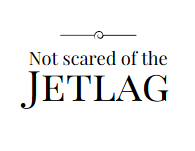The classic view of Bahrain is the distinctive buildings and soaring skyscrapers of Manama. But the nearby town of Muharraq is full of narrow streets and traditional Bahraini houses, a reminder of the days when the country’s economy depended upon pearls rather than oil. Muharraq is now a UNESCO World Heritage Site, and one way to explore it is by following the Pearling Path. As I discovered, the path is to some extent a work in progress, but it is still a good way to discover the area and its history.
This post is written by Karen Warren, who is a freelance writer, book reviewer and novelist. She writes about travel on her website WorldWideWriter. It was first published on her blog in 2020.
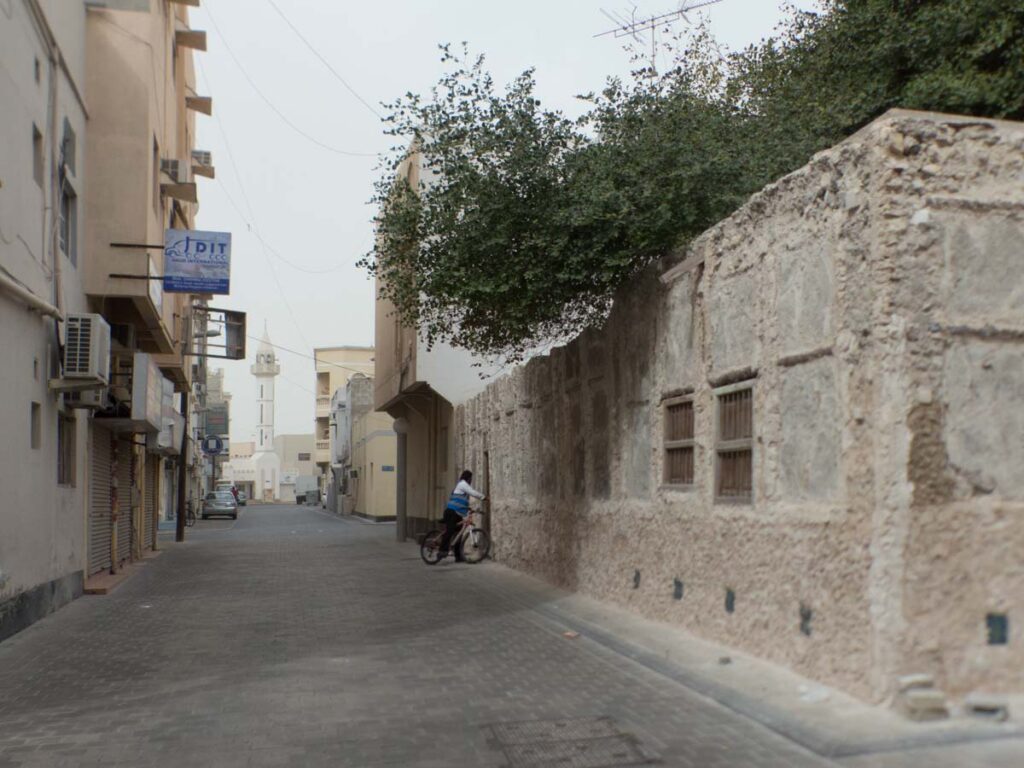
Murharraq, A UNESCO World Heritage Site
Muharraq is Bahrain’s third largest town, situated on an island close to Manama, but connected by road. The city is around 5,000 years old and was the nation’s capital until 1932. Its history dates back to the ancient Dilmun civilisation, but Muharraq has been variously occupied by the Greeks, the Portuguese and the Persians, prized for its strategic location and the lucrative pearl fishing trade. Today the island is home to the international airport but you can still explore the streets and buildings of the old town.
Muharraq became a UNESCO World Heritage Site in 2012. The inscription is based on the pearling industry that was central to the economy from the 2nd century until recent times. According to UNESCO, this is “the last remaining complete example of the cultural tradition of pearling and the wealth it generated at a time when the trade dominated the Gulf economy”.
The World Heritage Site includes a fort, houses, seashore and offshore oyster beds. (Bahrain has two other World Heritage Sites – both associated with the ancient Dilmun civilisation.)
For a day tour of Bahrain check out this tour by Get your Guide.
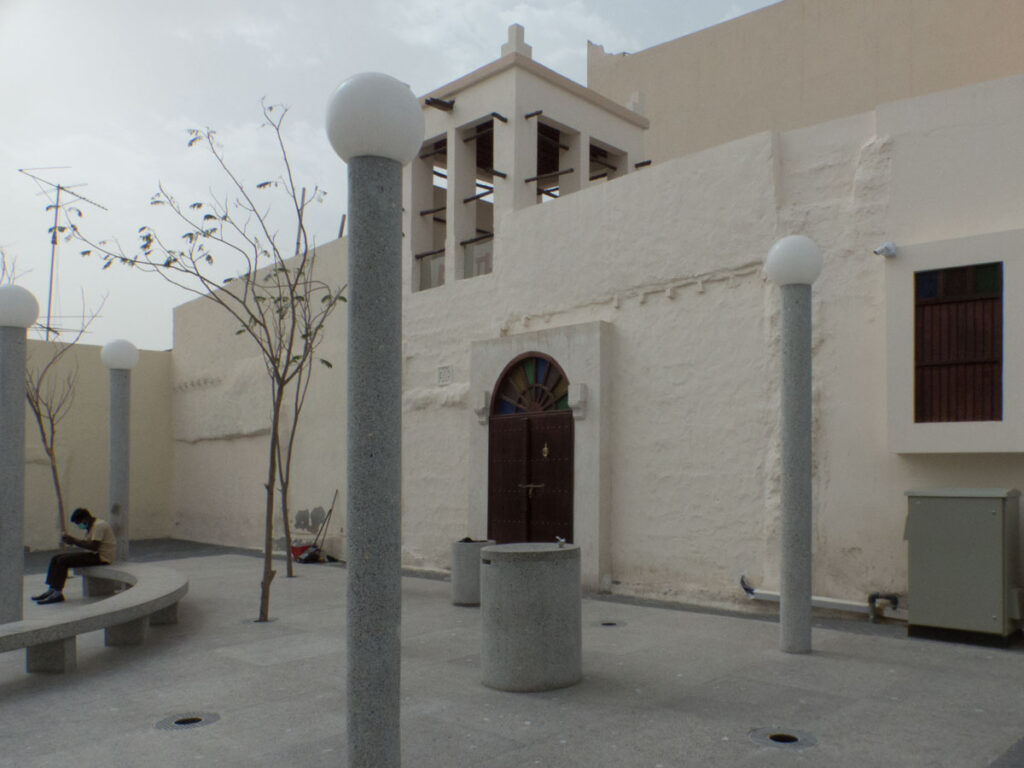
What Is The Pearling Path?
The Pearling Path is a 3.5 km walking trail through the old town, connecting several important buildings and museums. The path is marked by a series of pearl-shaped lamp posts. It is not yet complete: by the end of 2020 it will be connected to the Bu Mahir Fort, a historic structure that once protected the town and its pearling fleet (at present you can access the fort by boat from the National Museum in Manama).
Apart from the fort, the route takes in the 19th century Siyadi Mosque, the historic souk area, and a visitor centre. There are also several important houses, including the Al Alawi house with its traditional wind tower, and the Shaikh Isa Bin Ali House, once the grand home of a ruler.
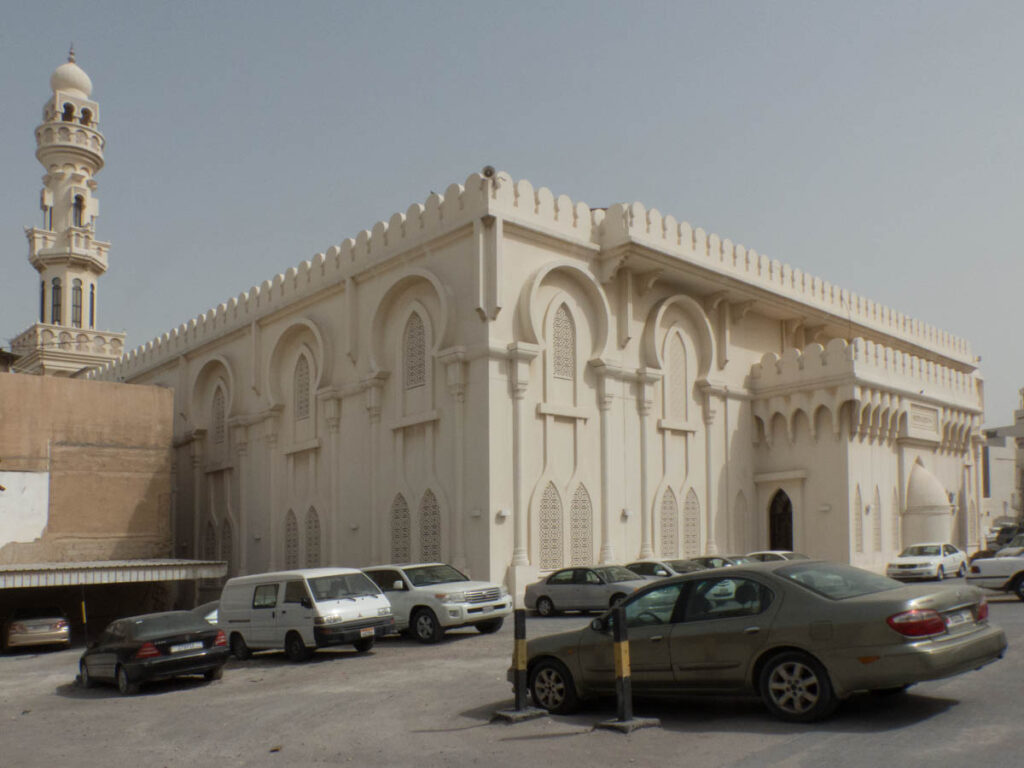
Walking The Pearling Path
I started my journey at the Al-Ghus House, once inhabited by pearl divers, and started to follow the pearl-topped lamp posts. However, it soon became clear that following the path wasn’t going to be a straightforward process. It was not always apparent which way to go; several buildings were being renovated; and one of them had apparently been relocated elsewhere. And the places that were completed had restricted opening times…
So I didn’t get to see inside any of the buildings on the route. But I did get a good sense of the area and its culture. The people were friendly – several stopped to say hello or to offer snippets of information – and the narrow streets were infused with the scents of incense and spices. And I did have a traditional Arabic breakfast at Saffron (in a historic building, with an old madhasa, or date press, beneath the floor).
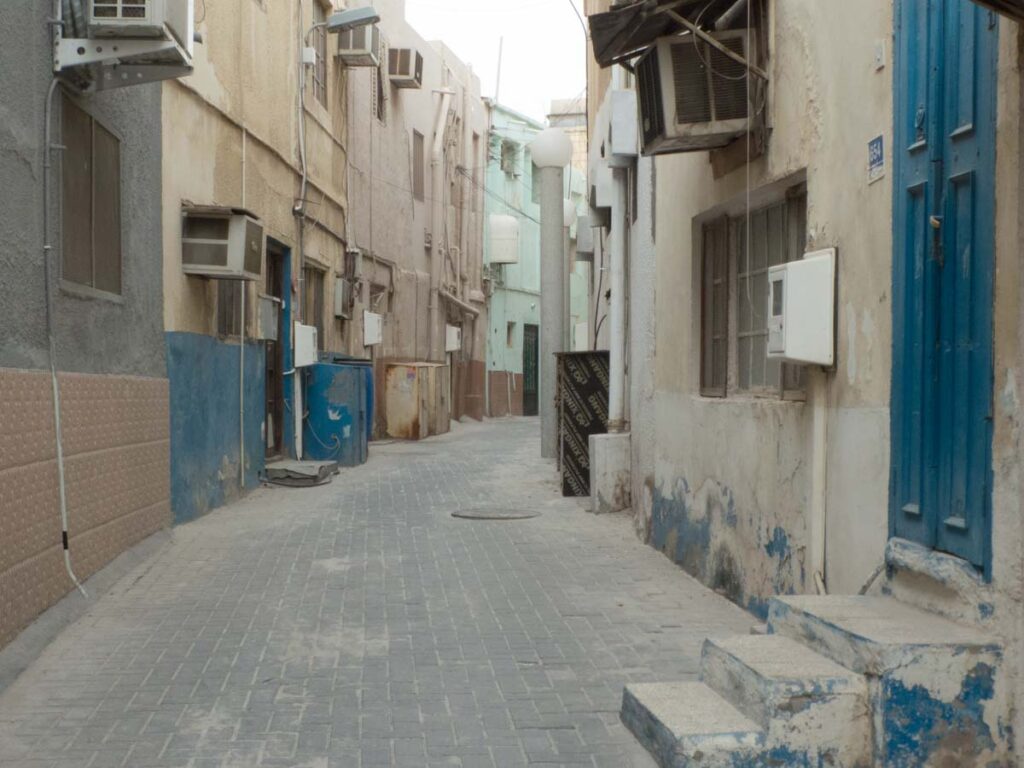
Many of the streets I walked along were dilapidated, the houses in need of repair. But further on I found an area with freshly whitewashed buildings and even a bit of street art. It was a taste of what the Pearling Path will look like when it is finished. But for now I was privileged to get a glimpse of a past era.
Please note that some of the links above are affiliate links and, at no additional cost to you, I earn a small commission if you make a purchase. That income goes to supporting this website and keeping it free for you and everyone else!
Is my blog helping you?
Maybe you want to thank me by inviting me for a coffee!
